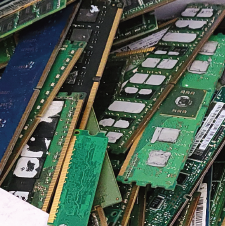In today’s rapidly evolving technological landscape, the proliferation of electronic devices has led to a corresponding surge in electronic waste, or e-scrap. With an estimated 53.6 million metric tons of electronic waste generated globally in 2019 alone, the need for effective recycling solutions has never been more critical. Central to the e-scrap recycling process is size reduction, a fundamental step that prepares electronic waste for downstream processing. In this article, we delve into the significance of size reduction for e-scrap recycling and explore the role of hammer mills in achieving optimal efficiency.
Understanding the Importance of Size Reduction
E-scrap, comprising obsolete electronics ranging from smartphones to computers, contains valuable materials such as precious metals, plastics, and rare earth elements. However, the efficient recovery of these resources is contingent upon effectively breaking down e-scrap into smaller, manageable pieces. Size reduction plays a pivotal role in enhancing the accessibility of these materials for subsequent separation and recovery processes.
Challenges in E-Scrap Size Reduction
E-scrap presents unique challenges in size reduction due to its diverse composition, which includes a mix of metals, plastics, glass, and other materials. Moreover, electronic devices come in various shapes and sizes, necessitating flexible and robust size reduction solutions capable of handling different types of e-scrap efficiently. Achieving the desired particle size distribution while minimizing energy consumption and equipment wear poses additional challenges in the e-scrap recycling process.
The Role of Hammer Mills in E-Scrap Recycling
Hammer mills have emerged as indispensable tools in e-scrap recycling, offering versatile and efficient size reduction capabilities. These machines utilize high-speed rotating hammers to pulverize materials, effectively reducing them to the desired particle size range. Hammer mills excel in processing a wide range of e-scrap materials, including circuit boards, hard drives, and electronic components, thanks to their adjustable settings and rugged construction.
Advantages of Hammer Mills for E-Scrap Recycling
1. Versatility: Hammer mills can accommodate various types of e-scrap materials, enabling operators to process diverse feedstocks with ease.
2. High Efficiency The high-speed impact of hammers ensures rapid and effective size reduction, maximizing throughput while minimizing processing time.
3. Customizability Hammer mills offer adjustable settings to tailor particle size distribution according to specific requirements, optimizing resource recovery and downstream processing efficiency.
4. Robust Construction: Designed to withstand the rigors of continuous operation, hammer mills boast rugged construction and durable components, minimizing downtime and maintenance costs.
Conclusion
Size reduction lies at the heart of e-scrap recycling, facilitating the recovery of valuable materials from obsolete electronics. Hammer mills stand out as indispensable tools in this endeavor, offering unparalleled versatility, efficiency, and reliability. As the demand for sustainable recycling solutions continues to grow, the role of hammer mills in e-scrap processing remains integral, driving innovation and maximizing resource recovery in the quest for a greener, more sustainable future.
At Schutte Hammermill, we are committed to providing cutting-edge size reduction solutions tailored to the unique challenges of e-scrap recycling. Contact us today to learn more about our comprehensive range of hammer mills and how they can optimize your e-scrap recycling operations. Together, let’s pave the way for a more sustainable tomorrow.

